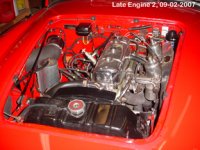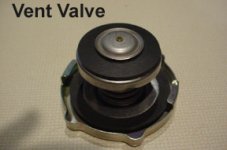nevets
Jedi Knight
Offline
a minor but vexing issue...
sometimes after a long drive in the hot weather, the water temp will go up to near boil once I cut the engine. this I believe is normal because with the engine off, the coolant is not circulating and so it gets hotter for a while. my question is this... usually on these occasions I will get some coolant oozing from the overflow tube. lately however, I'm also getting some coolant leaking around the radiator cap. this coolant, being hot is damaging the paint on the radiator and fan shroud. why is there leakage around the cap? the cap is screwed down tight and the overflow tube is not clogged... could it be that I need to replace the radiator cap or is there something more sinister amiss? oh and the coolant level in the radiator is approx 2" below cap level.
sometimes after a long drive in the hot weather, the water temp will go up to near boil once I cut the engine. this I believe is normal because with the engine off, the coolant is not circulating and so it gets hotter for a while. my question is this... usually on these occasions I will get some coolant oozing from the overflow tube. lately however, I'm also getting some coolant leaking around the radiator cap. this coolant, being hot is damaging the paint on the radiator and fan shroud. why is there leakage around the cap? the cap is screwed down tight and the overflow tube is not clogged... could it be that I need to replace the radiator cap or is there something more sinister amiss? oh and the coolant level in the radiator is approx 2" below cap level.

 Hi Guest!
Hi Guest!

 smilie in place of the real @
smilie in place of the real @
 Pretty Please - add it to our Events forum(s) and add to the calendar! >>
Pretty Please - add it to our Events forum(s) and add to the calendar! >> 






